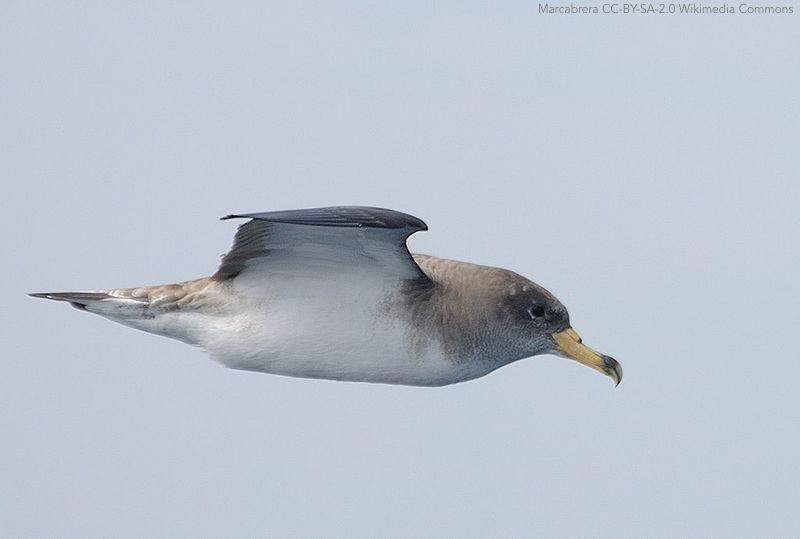
Cory's Shearwater in flight
Joana Calado (Molecular and Environmental Biology Centre, University of Minho, Braga, Portugal) and colleagues have published in the journal Ocean & Coastal Management on Cory's Shearwaters Calonectris borealis (and other seabirds) that interact with Portuguese fishing vessels in the North-east Atlantic.
The paper’s abstract follows:
“Seabirds are marine predators known to forage in association with fisheries, however detailed knowledge on seabird-fishery interactions remains scarce in several regions of the world. We quantified seabird-fishery interactions and bycatch in central Portuguese coastal waters (NE Atlantic) between 2016 and 2018 in four gears: purse-seines, longlines, gillnets, and fishing traps. We mapped gear-specific fishing effort and seabird bycatch events and characterized fishery catches. Specific objectives were to determine separately for seabird-fishery interactions and bycatch (i) the gear with the highest rates, (ii) the most abundant species, and (iii) to assess the main drivers (i.e. year, season, gear, and fishery catch) of seabird-fishery interactions. Purse-seines had the highest seabird-fishery interactions, and the most abundant species were Yellow-legged and Lesser black-backed gulls, Northern gannet, and Cory's shearwater. Total seabird-fishery interactions varied inter-annually but not seasonally, indicating high total seabird numbers at fishing boats year-round. In contrast, higher fishery interactions were found during spring for Yellow-legged gulls. Age classes of individuals varied according to species, and fishery catches had a positive effect on seabird-fishery interactions. Seabird bycatch occurred mostly in longlines and within the ‘Ilhas Berlengas’ Special Protection Area. Northern gannet and Cory's shearwater were the most bycaught species, and species ecological traits seemed important in determining gear-specific bycatch. Our results suggest a strong influence of purse-seine and artisanal fisheries on seabirds in the NE Atlantic coast, and future studies should investigate the effects of these fisheries on seabird populations in other regions of the world”.
Reference:
Calado J.G., Ramos, J.A. Almeida, A., Oliveira, N., Paiva, V.H. 2020. Seabird-fishery interactions and bycatch at multiple gears in the Atlantic Iberian coast. Ocean & Coastal Management doi.org/10.1016/j.ocecoaman.2020.105306.
John Cooper, ACAP Information Officer, 26 August 2020

 Français
Français  English
English  Español
Español